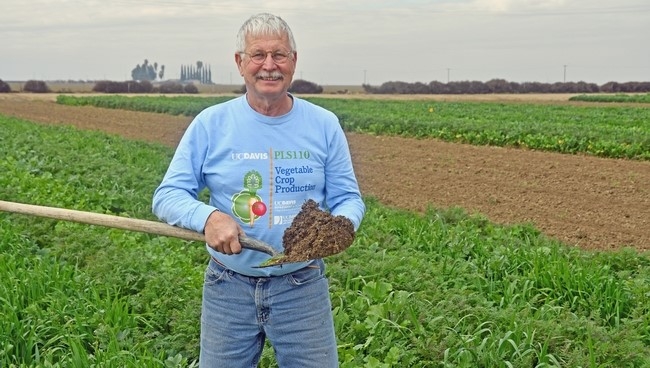The cover cropped-field is the 'real disruptor'
KQED reporter Mark Schapiro discovered a "center of insurrection" at the UC West Side Research and Extension Center in Five Points, where UC Cooperative Extension cropping systems specialist Jeff Mitchell has been building soil on a research plot for 20 years.
Schapiro's story was part of a series titled "Reckoning in the Central Valley," a collaboration between Bay Nature magazine and KQED Science examining how climate change is exposing the vulnerabilities of California agriculture.
In the Central Valley, climate change is disrupting the predictability that is key to maintaining a profitable industrial agriculture system. Mitchell believes that employing practices that build soil - such as reducing or eliminating tillage and planting cover crops - will help farmers ride the wave of climate change.
It's that cover-cropped field “that is the real disruptor here," Mitchell said.
The soil in test plots where cover crops were grown are loaded with far more organic matter than soil in fields where cover crops were not grown. The organic matter improves water absorption, making the land more resilient to drier conditions. Fields with cover crops also sequester carbon and produce crops that may be more nutritious.
“What you see in Five Points,” said Daphne Miller, a physician who studies the links between the health of the foods we eat and the soil in which they're grown, “is that the plots with the greatest diversity of cover crops had the most diverse microbiome in the soil.”
Comments:
https://www.csuchico.edu/regenerativeagriculture/events/soil-health-intensive.shtml



It's been an experience working with you in this trial. I have seen the soil evolve and it's impressive to say the least.
Keep up the hard work Dr. Mitchell.
Posted by Rafael Merf Solorio on June 25, 2019 at 5:51 PM